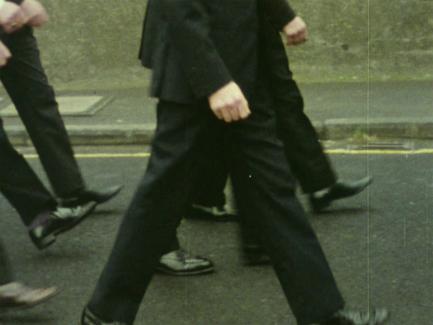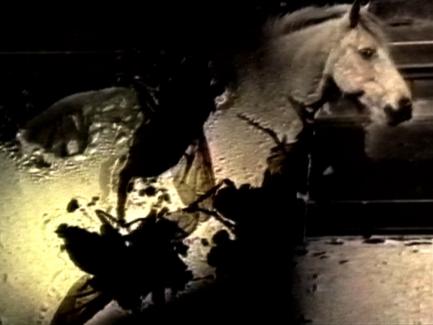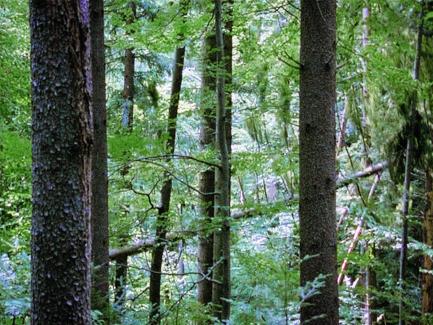Numen
John Akomfrah and Trevor Mathison (2014; 11 mins., 30 secs.)
Numen uses the visual vocabulary of the modern city to explore the tension between permanence and impermanence. Throughout the film, Akomfrah and Mathison present viewers with poetic images of architecture, monuments, and urban wooded parks. With a slow, enveloping mist reminiscent of Japanese landscape painting, the environment in many of the scenes holds a mysterious power over the human figures. Like ghosts, these figures travel through the landscape, only to disappear into the fog or out of frame. Trees, buildings, and statues, however, remain unchanging. In our cities, monuments are silent witnesses to the events of history, constantly watching, often unnoticed by the people who walk by. Akomfrah and Mathsion draw attention to these overlooked monuments, many of which, such as London’s Albert Memorial, directly recall the history of the British Empire and colonialism.
The narrator of the film tells the fictional story of a father and son’s journey through a postapocalyptic world. The fog in Numen is reminiscent of a noxious ash that blankets the landscape, indicating that something terrible has happened. Yet, in this city, humanity persists. The passing clouds suggest that relief may come. Following the outbreak of the Covid-19 pandemic, Numen developed a renewed significance, serving as reminder of the fragility of life and the need for perseverance to endure.
About John Akomfrah and Trevor Mathison
John Akomfrah (born 1957) is an artist, filmmaker, and director who explores themes such as memory, temporality, and the experiences of global migrant communities. Trevor Mathison (born 1960) is an artist, composer, sound designer, and recordist whose haunting and poetic audial work has been featured in over 30 award-winning films. Akomfrah and Mathsion were founding members of the seminal Black Audio Film Collective (BAFC) (1982–98), a group of seven artists whose wide-ranging body of films engaged with Black and other diasporic cultures in Britain. Akomfrah and Mathison were pivotal to the collective’s signature style that is characterized by dense, richly textured and layered works that are both visually and aurally arresting. As part of BAFC, Akomfrah and Mathison collaborated on Handsworth Songs (1986), a groundbreaking film essay examining the race riots of 1985 in Birmingham and London, provoked by tensions between police and minority communities. The two artists have continued to collaborate on award-winning films, such as The Nine Muses (2011), Peripeteia (2012), Vertigo Sea (2015), and most recently, Slave Rebellion Reenactment (2019) with the artist Dread Scott. Their work remains at the forefront of postcolonial discussions about race and migration while continuing to explore the visual and sonic possibilities of film and lens-based works. Both artists live and work in London.
Written by Adam Chen (TD 2022)


